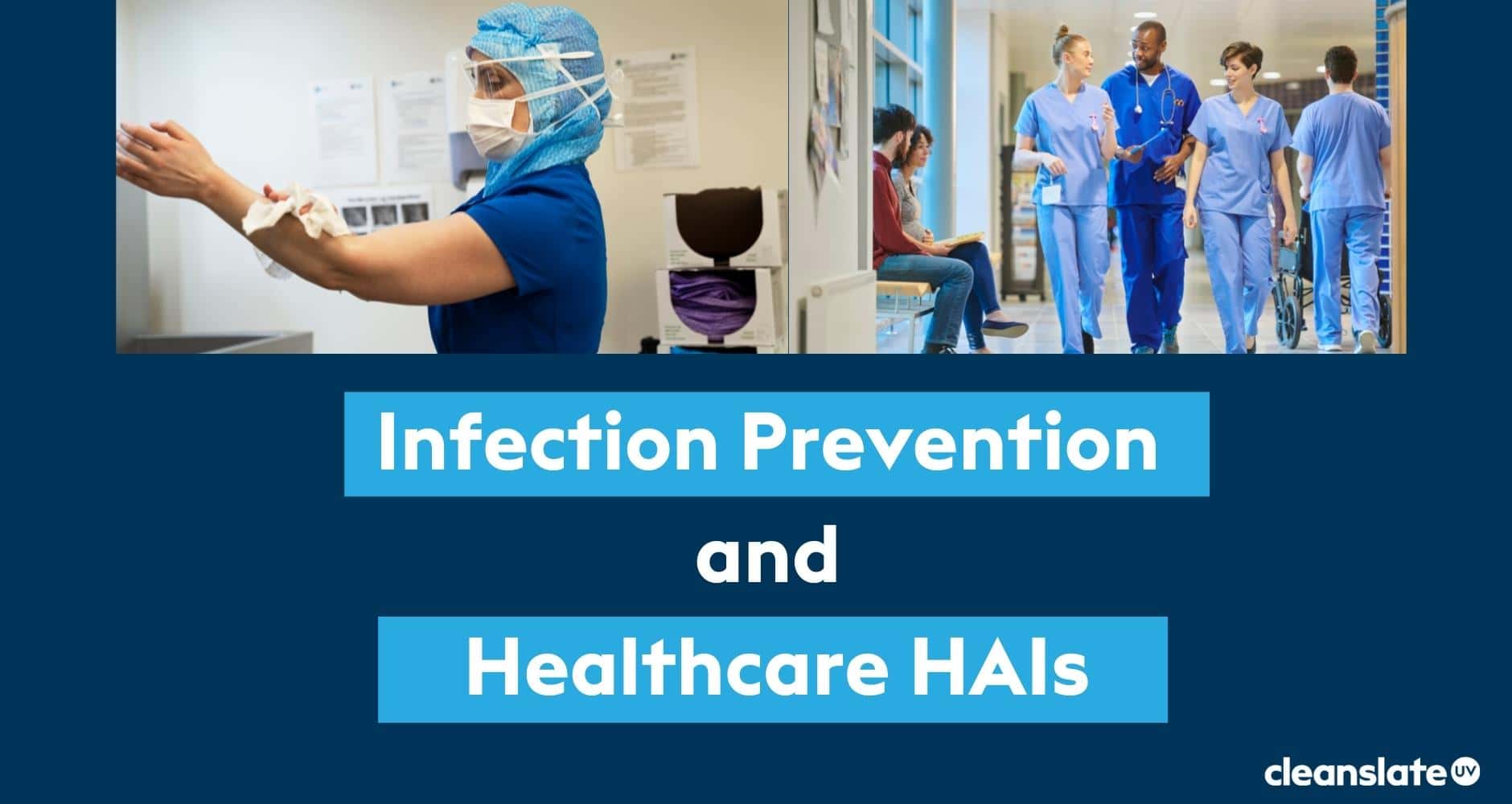Through the waves of the COVID-19 pandemic, the world has seen a significant spike in Hospital Acquired Infections (HAI). Ranking as the fifth leading cause of death in US hospitals, HAIs put a significant strain on the healthcare industry. HAIs puts everyone at risk, especially those in developing, low-income countries and those with weakened immune systems.
Let’s explore what exactly is a healthcare HAI and why you should care about infection prevention.
What are Healthcare Hospital-Acquired Infections?
Hospital Acquired Infections, also known as Nosocomial Infections or healthcare-associated infections, are infections contracted when someone receives healthcare for a different medical need or condition than intended. Bacteria enters your body through a wound or your lungs, for example, and can cause serious effects, even possibly resulting in death.
The World Health Organization (WHO) states that “one in every ten affected patients will die from their HAI”. In May 2022, the first global report on infection prevention and infection control was released by the World Health Organization. This report includes data about unsafe challenges in healthcare settings and what infection control measures should be taken. The economic burden of almost $30 billion yearly, reported by the Centers for Disease Control and Prevention (CDC), shows how important it is to take adequate measures to reduce harmful infections and improve infection prevention.
Why should you care about infection prevention?
Imagine you needed to go to the hospital or a healthcare facility to get surgery. The procedure went well, but a few weeks later you noticed that the wound area was red, and you felt feverish. These are common signs that you may have contracted a HAI known as Surgical Site Infection (SSI). Unfortunately, you needed to be admitted back into the hospital. You have now contracted an infectious disease! This is why infection prevention and control is critical in healthcare settings.
It is important for hospitals to take proper measures to ensure patient safety. Infection prevention and control in healthcare settings helps to reduce the spread of infectious diseases and prevent increased hospital admissions for HAIs. Anyone, including healthcare workers and incoming patients, can contract HAIs. Thus, taking extra steps through infection prevention and cleaning the environment will be a benefit for public health and improve overall patient care.
What are the Different Types of Healthcare Infections?
The CDC outlines four types of Hospital Acquired Infections commonly found in healthcare.
Central Line-associated Bloodstream Infection (CLABSI)
Bacteria moves into the bloodstream through the non-sterile tube/central line
Catheter-associated Urinary Tract Infections (CAUTI)
Infection is often caused by improper placement of the catheter in the urinary tract
Surgical Site Infections (SSI)
Infection near the body part where the surgery was performed (on the skin or under the skin)
Ventilator-associated Pneumonia (VAP)
Germs passing through ventilator tubes causes lung infection
Each one of these has their own infection prevention measures that hospital and healthcare workers are responsible for. These can include health care providers wearing personal protective equipment (PPE), vaccination, and practicing proper hand hygiene. Yes, something as simple as hand hygiene can save lives! And we must not forget, keeping a clean and safe environment through disinfection practices in healthcare facilities and hospitals, must always be a priority.
Healthcare Infection Prevention Techniques
Hand hygiene continues to be the single most important infection prevention technique. Clean hands help prevent bacteria from cross contaminating between your body and the item you are using.
CleanSlate UV’s mission is to advocate and showcase the importance for sanitization of both devices and hands. Through UV technology, medical staff can ensure that their devices are sanitized effectively in a fast and efficient 20-second cycle. Proven to increase hand hygiene events by 50 – 100%, having a nearby CleanSlate UV ensures a safe and clean environment and reduces risk of transmission.
Implementing infection prevention practices can not only save the healthcare industry billions of dollars but reduce specific HAIs by up to 70 percent.
Hospitals and healthcare facilities must do their part to keep patients healthy and safe against HAIs. It is also important to educate our future generations about infection control and prevention techniques.


